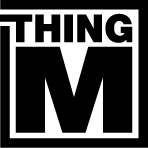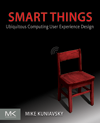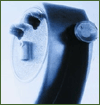In 2005 I was in Tokyo at Ubicomp 2005. While walking through Akihabara, I noticed that they were selling last season's fake demo phones ("dummy phones") for cheap. I had been interested in the industrial design of phones for several years, because at that point, physical affordances were one of the chief competitive differentiators in phones. For example, after several years of criticism Nokia released a clamshell phone in 2004, expanding their design beyond the candy bar. Phones with slide out keyboards were becoming more common. (see the Wikipedia page on phone form factors for more info on all this) The relationship between the physical form of a device and it's social role was very interesting to me, and these phones, these experiments in changing the shape of devices that were functionally very similar, was very interesting. What did these different ways of holding a device, manipulating it and looking at it say to its users? What did it allow them to do?
You don't often get the opportunity to hold a lot of different phones and compare them side to side unless you're in a store, but the cheap phones in Akihabara reminded me that I could do that if I bought them, and at $2 apiece, I could do that. With the help of my girlfriend (now wife), we picked out 20 of the most wild-looking and different phones we could find. From that moment, and for the next couple of years, I was hooked. I bought several hundred dummy phones and a few working phones (though not many, since my per-phone budget was $3) on Ebay, often in batches from phone stores getting rid of last season's stock. What I didn't realize was that I inadvertently documented the last great design push before the iPhone made virtually every phone converge to the form factor of a black rectangle. The need for my planned physical affordance research was wiped away almost overnight.
The phones have been sitting in boxes in my house for several years and I've long meant to do something with them, so I decided that the easiest thing to do, for the moment, is just to photograph all of them and put them up, one per day, for as long as I have the energy or until I run out of phones.
Help wanted
For many of the phones I don't have the model numbers or years when they were released. If you know this, please click through to the Flick page and add that information, and anything else that seems relevant, to the phone's metadata.
Today's phone


Samsung Access SGH-827 from 2008.
NOTE: I realize this is not a particularly interesting phone to start the project with, but it's the first one I pulled out of the box. I promise there will be many wacky phones in the future, and more boring ones, and I'll try to regularly put interesting designs into the mix. There's only so many Nokia candy bar phones and Blackberry knockoffs that you can look at.



